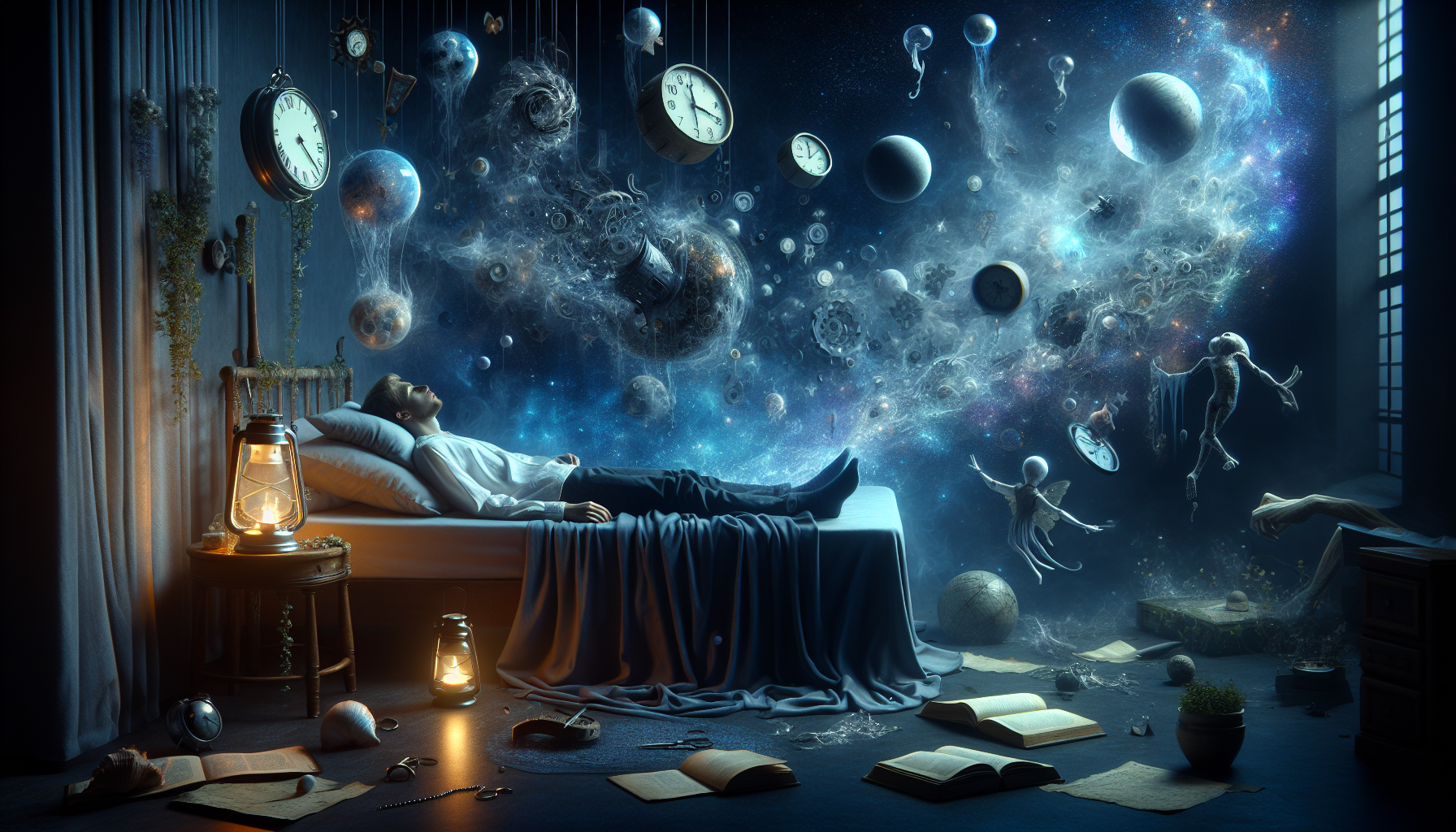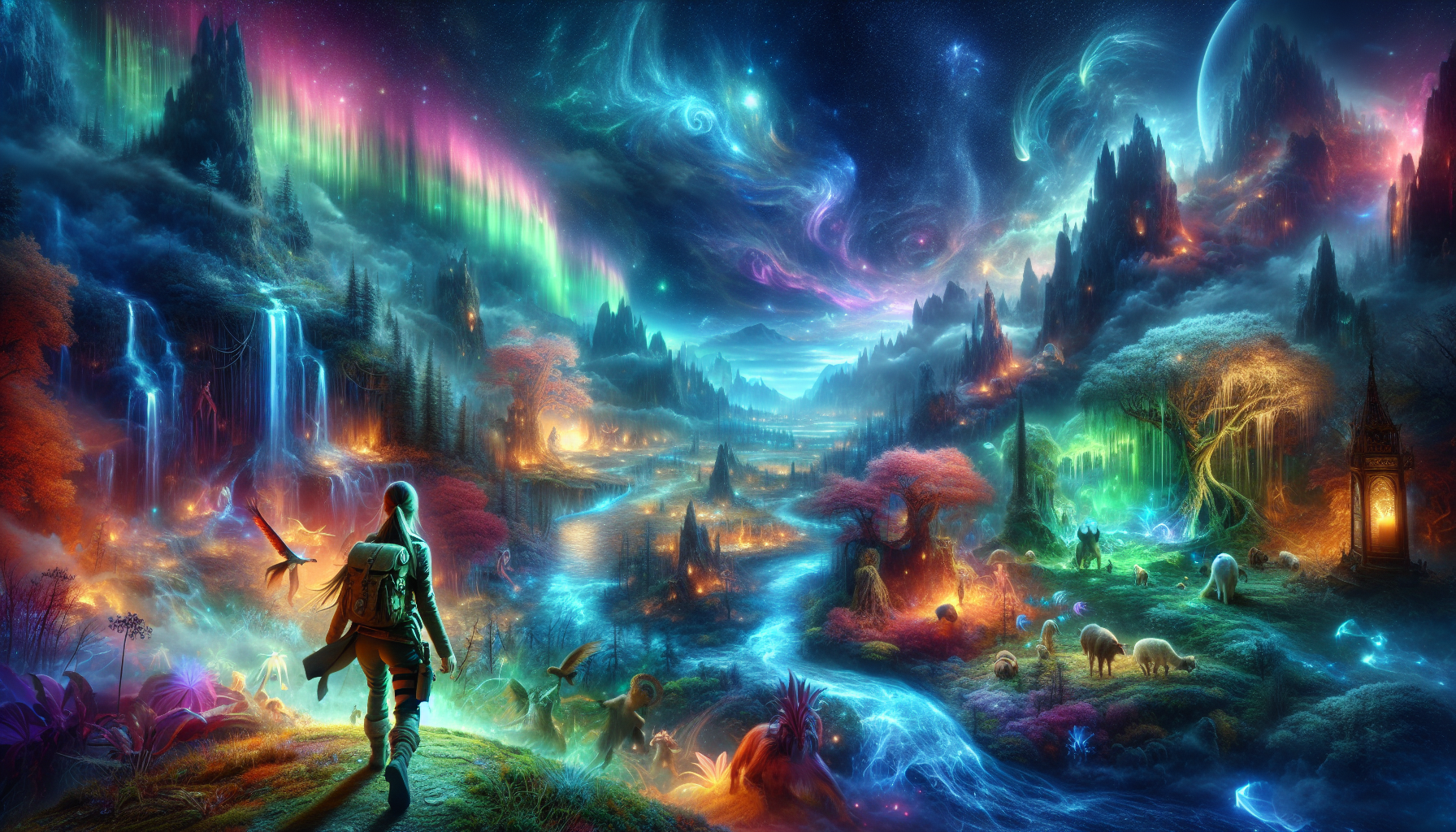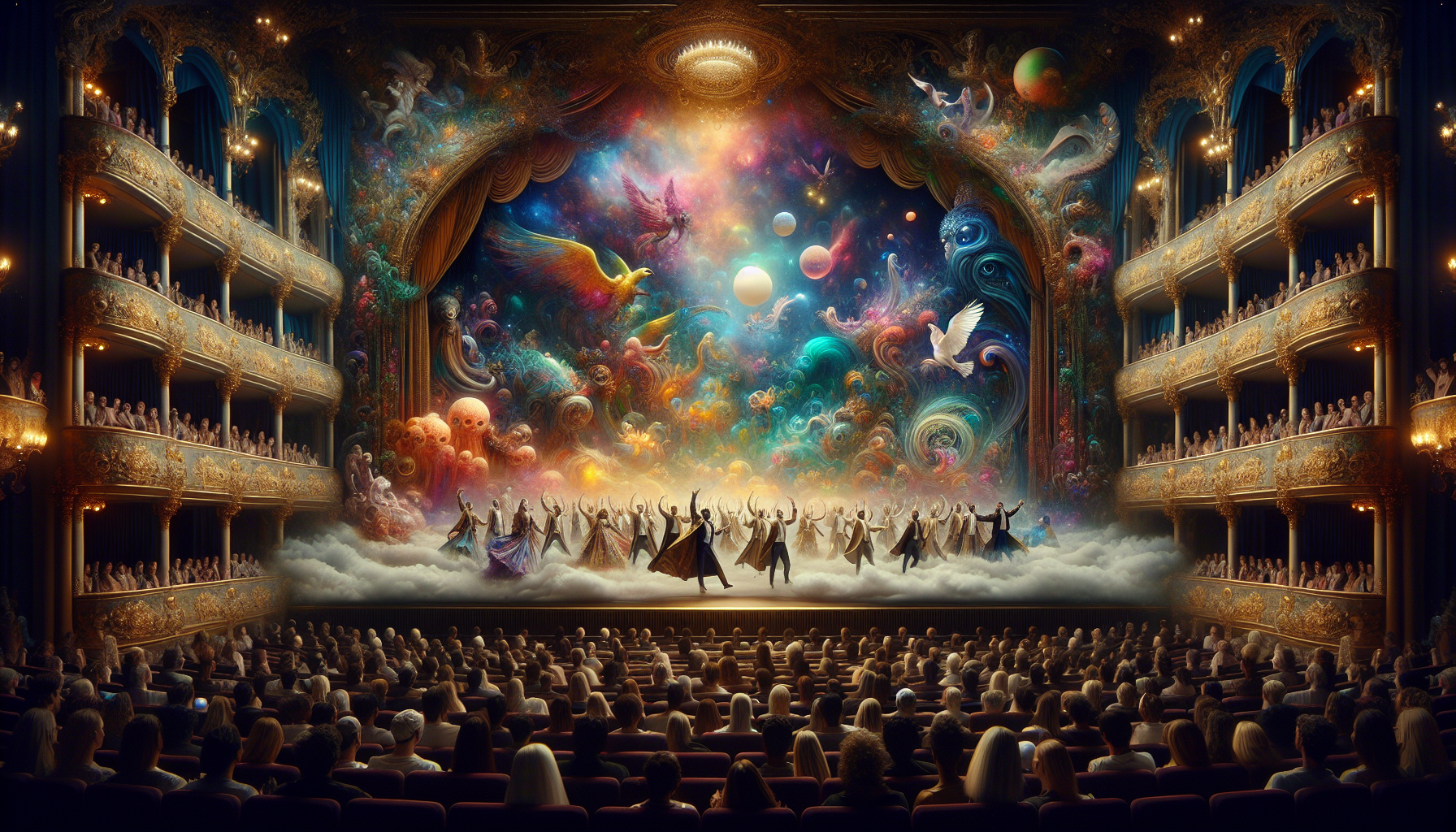Dreams have long been the enigma that both fascinates and baffles humanity, a nightly escape into a realm where logic takes a backseat and the bizarre comes to life. Whether you’re floating in the air, speaking a language you’ve never learned, or being chased by an inexplicable entity, dreams have a way of leaving us perplexed yet intrigued. It’s as if our subconscious mind is speaking in a cryptic language, and we’re left with the task of deciphering its message. What if, however, the nonsensical elements of our dreams—those truly bewildering and surreal moments—are not mere chaos, but rather a rich tapestry of symbolism waiting to be unraveled? ✨
In this journey to unlock the mysteries of your dreams, we will delve deep into the hidden symbolism that lies within the nonsense. Far from being random figments of imagination, these bizarre dream elements often carry significant meaning and insight into our inner world. By exploring the science and psychology behind dreams, we aim to shed light on why they might manifest in such perplexing ways. We’ll discuss the theories of renowned psychologists like Sigmund Freud and Carl Jung, who have laid the groundwork for understanding the symbolic nature of dreams, and examine how contemporary research continues to build upon their ideas.
Throughout this exploration, we will decode common nonsensical dream themes and symbols, offering you a toolkit to interpret your own nightly adventures. From dreams where you find yourself lost in a labyrinth to those where the laws of physics seem irrelevant, each scenario might be a reflection of your waking life challenges, desires, or fears. We’ll provide practical tips and techniques to help you keep a dream journal, recognize recurring patterns, and ultimately, harness the wisdom of your dreams for personal growth and self-discovery.
By the end of this deep dive into the dream world, you’ll not only have a greater appreciation for the surreal narratives your mind creates each night, but also a new perspective on how to approach them. The nonsense in your dreams is not to be dismissed; rather, it’s an invitation to explore the depths of your subconscious and unlock the mysteries hidden within. So, prepare yourself for an enlightening journey through the dreamscape, where every absurd scene holds the potential for profound insight. 🌙
Understanding the Concept of Nonsense in Dreams
Dreams have been a subject of fascination and study for centuries, with various interpretations and meanings ascribed to them. At the heart of many of these interpretations lies the concept of “nonsense” – elements in dreams that appear illogical, surreal, or devoid of any immediate rational explanation. This so-called nonsense often carries hidden symbolism, acting as a key to unlocking the deeper meanings of our subconscious mind. But what exactly is nonsense in dreams, and how can we begin to decode it? 🤔
To better understand the concept of nonsense in dreams, it’s essential to first recognize the inherently symbolic nature of dreams. Dreams often use a unique language that combines elements of our waking life with seemingly unrelated imagery and events. These nonsensical elements serve as a reflection of our innermost thoughts, fears, and desires, which may not always be apparent to our conscious mind. By examining these nonsensical aspects, we can gain insights into our psychological state and emotional well-being.
For instance, consider a dream where you are flying on a giant banana through a stormy sky. At first glance, this may seem like pure nonsense. However, when broken down, the dream might symbolize a desire for freedom or escape (the act of flying), while the storm could represent turmoil or challenges in your life. The giant banana, an unusual choice of aircraft, could signify humor or absurdity in dealing with these issues, perhaps indicating a need to approach life’s challenges with a lighter attitude.
The Role of Archetypes in Nonsensical Dream Elements
Archetypes play a significant role in understanding the nonsense in dreams. These are universal, symbolic images or themes that recur across different cultures and times, deeply embedded in our collective unconscious. Carl Jung, a prominent figure in psychology, emphasized the importance of archetypes in dream analysis, noting that they often appear in nonsensical or fantastical forms within our dreams.
When interpreting dreams, identifying archetypal images can provide clarity on seemingly nonsensical elements. For example, encountering a wise old man or a nurturing mother figure in your dream could indicate guidance or support, even if their presence feels out of place or nonsensical in the dream’s context. By recognizing these archetypal symbols, you can begin to decipher the underlying messages that your subconscious mind is trying to communicate.
Decoding the Symbolism: Common Nonsense Elements in Dreams
Dreams often present us with a bizarre blend of images, events, and characters that defy the rules of logic and reality. To decode the symbolism of these nonsensical elements, it’s helpful to explore some common themes and motifs that frequently appear in dreams. By examining these elements, you can begin to uncover the hidden meanings within your dreams.
One of the most prevalent nonsensical elements in dreams is the concept of transformation. Dreams often depict scenarios where people, objects, or animals undergo rapid and unexpected transformations. While these transformations may appear nonsensical, they often symbolize change, growth, or a shift in perspective. For example, a dream where you transform into a bird and soar through the sky might represent a desire for freedom or a new outlook on life.
Another common nonsensical element is the presence of fantastical creatures or imaginary beings. These characters often embody aspects of our psyche or emotional state. A dream featuring a talking dragon, for instance, could symbolize an internal conflict or a powerful emotion that needs to be addressed. By recognizing the symbolic significance of these creatures, you can gain valuable insights into your subconscious mind.
Exploring the Symbolism of Unfamiliar Settings
Unfamiliar settings are another frequent source of nonsense in dreams. These surreal landscapes, which defy the rules of the physical world, often reflect our emotions, memories, or unresolved issues. For instance, a dream set in a labyrinthine city might symbolize feelings of confusion or being overwhelmed in your waking life. By analyzing these settings and their symbolic meanings, you can uncover the deeper messages your subconscious is trying to convey.
As you explore the symbolism of nonsense in your dreams, it’s crucial to approach the process with an open mind and a willingness to embrace the unknown. Dreams, by their very nature, often challenge our perceptions and invite us to explore the depths of our subconscious. By engaging with these nonsensical elements, you embark on a journey of self-discovery, uncovering the hidden layers of your psyche and gaining a deeper understanding of yourself.
Interpreting Personal Symbols and Unique Dream Language
One of the most intriguing aspects of dreams is their use of personal symbols and unique language, which can often appear nonsensical to the dreamer. These symbols are highly individualized, shaped by personal experiences, memories, and emotions. Understanding these personal symbols is key to decoding the hidden meanings of nonsense in your dreams.
| Common Nonsensical Dream Elements | Possible Symbolic Meanings |
|---|---|
| Transformation | Change, growth, new perspectives |
| Fantastical Creatures | Inner conflicts, emotions |
| Unfamiliar Settings | Emotions, unresolved issues |
Another important aspect to consider is the unique language of dreams. Dreams often communicate through metaphor, using symbolic imagery and scenarios to convey complex emotions and thoughts. By learning to interpret this language, you can gain valuable insights into your subconscious mind and the hidden symbolism within your dreams.
Developing Your Dream Interpretation Skills
Interpreting dreams is a skill that can be developed over time with practice and patience. To enhance your dream interpretation skills, consider keeping a dream journal to record and analyze your dreams regularly. This practice can help you identify patterns and recurring symbols, making it easier to decode the nonsense in your dreams.
Additionally, seeking out resources and guidance from experienced dream interpreters or psychologists can provide valuable insights and support. By engaging with experts in the field, you can deepen your understanding of dream symbolism and enhance your ability to interpret the hidden meanings within your dreams.
Ready to dive deeper into the world of dream interpretation? Watch this video for more insights: Dreams: Unlocking Their Secrets – MindValley.

Conclusion
Unlock the Mysteries: Decoding the Hidden Symbolism of Nonsense in Your Dreams
As we draw this exploration to a close, it’s essential to reflect on the rich tapestry of insights we’ve woven together about the mysterious world of dreams. Our journey has taken us through the intricate landscape of the subconscious, delving into the seemingly nonsensical elements that populate our nocturnal narratives. These dream fragments, often dismissed as mere absurdity, hold profound symbolic significance that can offer valuable insights into our waking lives.
Throughout this article, we’ve traversed various key points. We began by understanding the basic premise that dreams, despite their often bizarre nature, are not random. Instead, they are a complex interplay of memories, emotions, and symbols crafted by our subconscious mind. By decoding these symbols, we can unlock messages that our conscious mind may overlook. We examined how nonsensical elements in dreams, such as flying without wings or encountering mythical creatures, are not meaningless but are instead symbolic manifestations of our deepest thoughts and emotions.
We then delved into the psychological theories that underpin dream analysis. The works of Carl Jung and Sigmund Freud provided foundational insights, highlighting how dreams can serve as a bridge to understanding the psyche’s hidden depths. Jung’s archetypes and Freud’s notion of repressed desires gave us a framework for interpreting the symbolic language of dreams. By acknowledging these theories, we can better appreciate the nonsensical elements in our dreams as expressions of universal themes and personal experiences.
Moreover, we explored practical techniques for interpreting dreams, emphasizing the importance of personal context. Keeping a dream journal, for instance, allows us to track recurring symbols and themes, offering a personalized roadmap to our subconscious. This practice not only enhances self-awareness but also empowers us to address unresolved issues or unacknowledged desires. By engaging with our dreams in this manner, we cultivate a deeper understanding of ourselves and our motivations.
Additionally, we considered the cultural and historical perspectives on dream symbolism, recognizing that our ancestors often viewed dreams as prophetic or divine messages. This cultural lens enriches our understanding, reminding us that the symbolic language of dreams transcends time and geography. It encourages us to view our dreams with a sense of wonder and curiosity, rather than dismissing them as mere fantasy.
As we conclude, it’s important to acknowledge the transformative potential of engaging with our dreams. By decoding the hidden symbolism of nonsense, we can gain insights that inspire personal growth and emotional healing. Dreams offer a unique opportunity to explore our inner world, providing guidance and clarity that can enhance our waking lives.
We invite you, dear reader, to embrace this journey of self-discovery. Consider the dreams that visit you in the quiet hours of the night not as random images, but as valuable messages from your subconscious. Reflect on the symbols and emotions they evoke, and allow yourself to be guided by the insights they reveal.
In doing so, you may find yourself more attuned to the subtle whispers of your inner self, leading to a life enriched by self-awareness and understanding. Share your experiences and insights with others, as the collective exploration of dreams can foster a deeper sense of connection and empathy. Let’s continue this dialogue and unravel the mysteries of our subconscious together.
Feel free to comment below with your thoughts or experiences related to dream interpretation. Have you ever decoded a dream that led to a meaningful revelation? How do you incorporate dream analysis into your daily life? Your stories and insights could inspire others on their journey to understanding the hidden symbolism in their dreams.
[Dream Studies Portal](https://dreamstudies.org) – A valuable resource for further reading on dream research and symbolism.
[International Association for the Study of Dreams](https://www.asdreams.org) – Offers resources and events for those interested in dream studies.
Together, let’s continue to unlock the mysteries of our dreams, one symbol at a time. 🌙
Gabriel is a visual storyteller and dream archivist whose work explores the fragile boundary between memory and imagination. Through layered visuals and symbolic design, Gabriel captures the fleeting essence of dreams — those strange, beautiful, and sometimes haunting fragments that drift through sleep and linger in waking thought.
His creative journey is rooted in a deep fascination with the subconscious and the imagery it conjures. From half-remembered landscapes to recurring symbols and surreal encounters, each piece Gabriel brings to life becomes a portal into the inner archive — where time distorts, meanings shift, and personal mythology takes form.
With a background in handcrafted artistry and visual composition, Gabriel merges intuition with intention. His work doesn’t merely depict dreams; it preserves them, translating ephemeral moments into tangible expressions that evoke emotion, curiosity, and quiet revelation. Each visual is both a record and an invitation to explore the rich terrain of inner life.
Through illustrated dream journals, symbolic studies, and visual essays, Gabriel invites others to connect with the poetic architecture of their subconscious landscapes. His art becomes a mirror — not only of what we see at night, but of what we carry deep within.
His work is a tribute to:
-
The fragile beauty of forgotten dreams
-
The language of symbols in the subconscious mind
-
The inner worlds we visit but rarely name
Whether you’re a lucid dreamer, a seeker of hidden meanings, or someone fascinated by the mystery of sleep-born stories, Gabriel welcomes you to step into a space where dreams are not lost — they are archived, one vision, one sketch, one silent narrative at a time.





